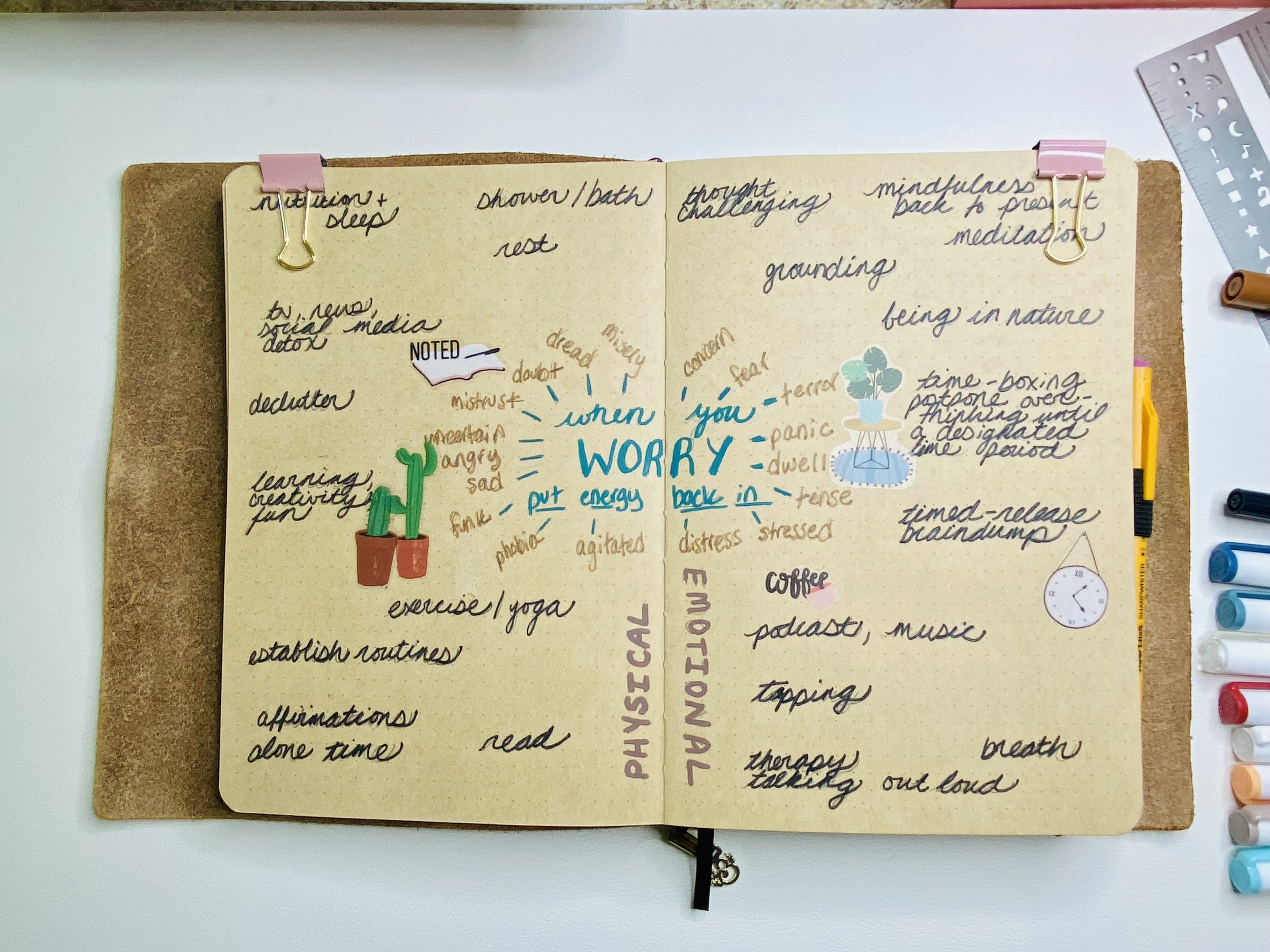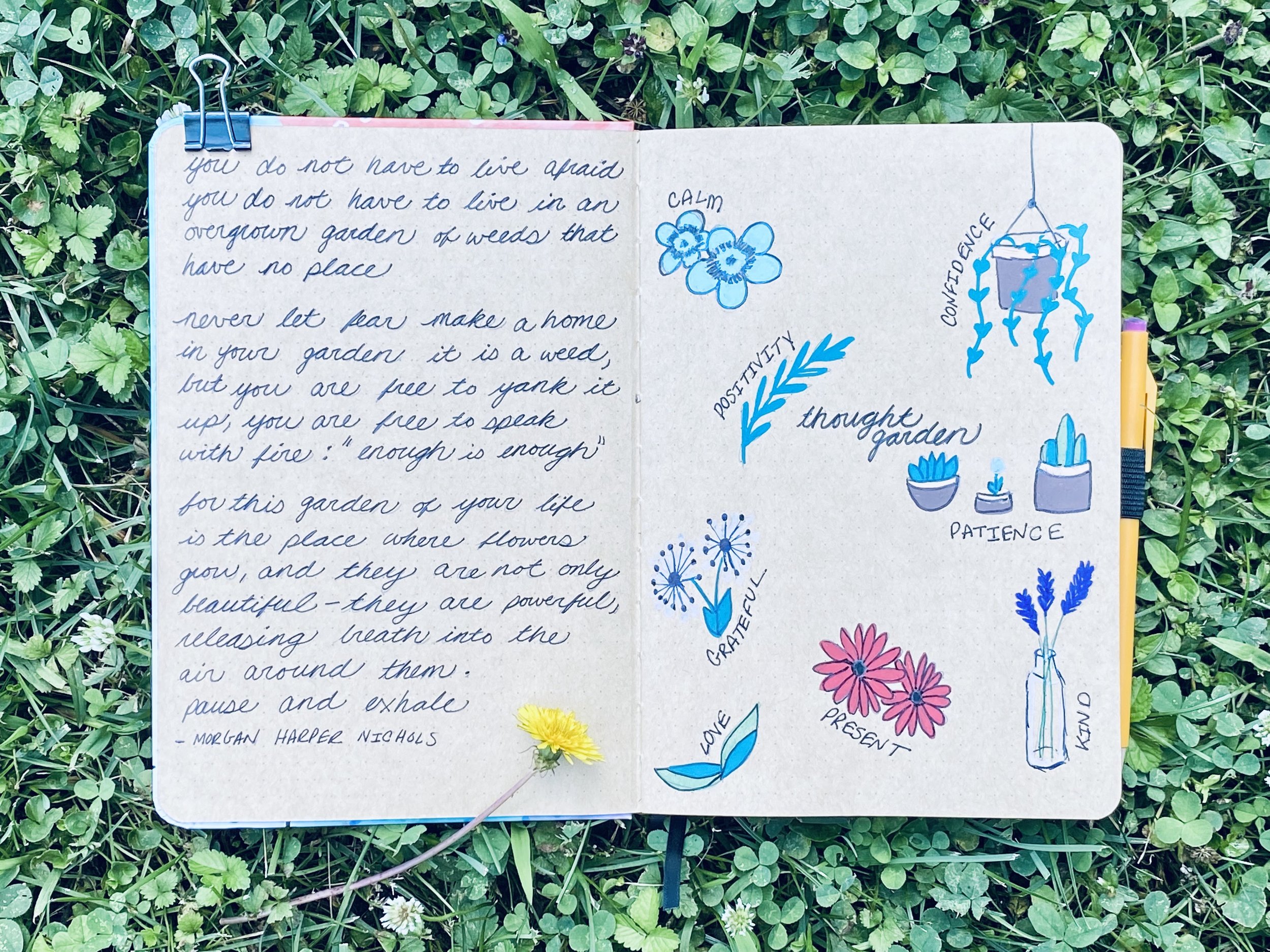Journaling for Anxiety
Use Any Notebook to Calm a Busy Mind
Anxiety and stress have always gone hand and hand. On the blog, I have written about the natural anxiety and worry that comes with being a classroom teacher for years. Many of my posts mention waking up in the middle of the night thinking about lesson plans, feeling like I can’t get ahead of my to-do list, or wondering how to fit it all in to achieve the ever-elusive “work-life balance.” Then, I became a mama, and a newer level of worry took over. Anxiety is a natural part of life. Tapping into the fight or flight response, anxiety is one of the most natural things that someone can feel. However, when unchecked, it can also make life more difficult. Some people seem to worry more and some less. Some people cope better with stress and worry than others. No matter where you are on the spectrum of anxiety, a notebook or journal can be a useful tool to calm a busy mind. This post includes a video overview of 5 different strategies for responding to anxiety including grounding, timed release, squared release, making a creative music playlist, and growing your own thought garden. You can also go a bit slower and look at the description of the exercises in detail.
YouTube Introduction
Journaling Tools for Any Notebook
Anxiety comes from a ton of different places and for a variety of reasons. It really is personal as it is tied to how we interact with life, how life interacts with us, and our level of ability of being able to cope with challenges and worries. Sometimes, we worry for reasons that seem bigger to us than needed. Sometimes, we worry because our plates are beyond full. Anxiety shows up as many other words that aren’t just anxiety.
To name a few…
Doubt
Fear
Phobia
Anger
Mistrust
Dread
There are a ton of different ways to cope with the challenges in front of us that are both physical and emotional representations of anxiety. On a physical level, this starts with nutrition, sleep, and exercise. On a more emotional level, this moves over into meditation, time-boxing, grounding, and focused breathing. The goal is always to have tools in the toolbox that can work in times when worry sets in so it doesn’t take over and get out of control. The tools that are listed in the next image are just ideas; the best part of the journey is figuring out what works for you.
Activity #1: Grounding
Grounding is literally the exercise of becoming grounded in the present moment. Often, anxiety and worry cause us to move emotionally or mentally to another place when our body remains firmly planted where we are. This disconnect causes chaos. Grounding brings the body and mind back together. The process for grounding is simple. When you find yourself in an anxious or worried state, you simply use the 5-4-3-2-1 method to bring yourself back.
5- THINGS YOU CAN SEE
4- THINGS YOU CAN TOUCH
3- THINGS YOU CAN HEAR
2- THINGS YOU CAN SMELL
1- POSITIVE THING IN YOUR LIFE
Complete the exercise and then check in with how you feel.
Activity #2: Listing/Timed-Release
In the video, I mention that the next two exercises are the most obvious and simple, but they are the ones that I use the most to help with worry. The first one is listing. It can also be called a timed-release or brain dump. Listing is just that: Make a list of everything on your mind. Open up any notebook or journal and give yourself 5 minutes to get it all out.
Your list might include:
What’s bothering you?
What is on your to-do list?
What is feeling overwhelming?
What do you need to think about at a later time?
Sometimes I find that getting the ball bouncing around my head onto the page does the trick. I love to incorporate this exercise into a morning or evening routine to jumpstart the day or help me unwind so I don’t wake up in the middle of the night thinking about my to-do list.
Activity #3: Squared Breathing
Squared breathing is another exercise that seems obvious, but I love putting the physical action of journaling or using a notebook with the action of purposeful breathing. Sometimes it is hard to slow down and breathe. Especially when you are thinking about a million other things. Squared breathing involves drawing a square in your notebook and then using that square as a guide for your breath. You can choose from the patterns 3-1-3-1 or 7-4-7-4. Here are the steps in detail using the 3-1-3-1 patttern:
Draw alongside the top of the square and breathe in for 3 seconds.
Draw alongside the right side of the square and hold for 1 second.
Draw alongside the bottom of the square and breathe out for 3 seconds.
Draw alongside the left side of the square and hold for 1 second.
You can repeat this process. It doesn’t have to be pretty, or maybe even you create a doodle or pattern as you are focusing on your breathing. The physical motion of your hand drawing is bringing your attention back to the present as you are focusing on your breath as well.
Activity #4: Music
This activity is not innovative in any way, but it allows your creativity to come through. I challenged myself to find almost 50 songs that I would add to a playlist. The only contingency is that they had to make me smile and want to sing when I thought of them. Many of my songs listed below are attached to a memory. Your notebook playlist or playlist already created on your device can serve as a great tool in your toolbox because it can be ready to go when needed in a moment of anxiety or worry.
Activity #5: Create a Thought Garden
This last activity is inspired by Morgan Harper Nichols's quote, “You do not have to live afraid. You do not have to live in an overgrown garden of weeds that have no place…” So, if the weeds don’t have a place in our garden, what thoughts would we want to grow? I chose: Calm, confident, positive, patient, grateful, present, loving, and kind, These are all things that I want to cultivate on a daily basis.









